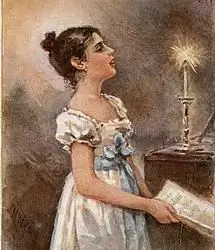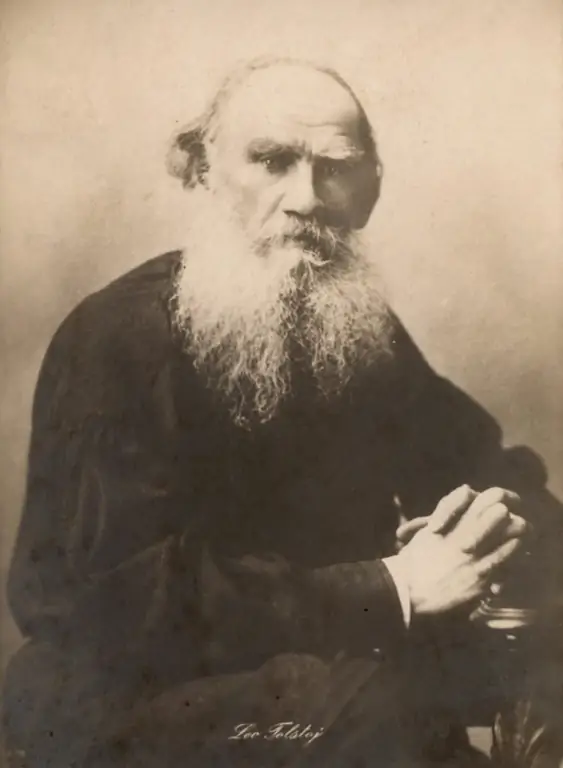2025 Author: Leah Sherlock | [email protected]. Last modified: 2025-01-24 17:46:24
Eduard Bagritsky's poem "The Death of a Pioneer" - the only one of the works of the Soviet poet included in the school literature curriculum - was written by him in 1932. A little later, it was published by the Krasnaya Nov magazine, timed to coincide with the 15th anniversary of the October Revolution. Later, the poem became one of the works of the poet's lifetime collection.
In the article we will talk about this work, the history of its creation, structure and plot, style features.
Eduard Bagritsky
The poet (real name Dzyubin) was born in Ukraine in 1895 in the city of Odessa, in a Jewish petty-bourgeois family. He received his education in a real school and in a land surveying school. The first poems begin to be published in periodicals in 1913-1914. These were mostly romantic poems, which thematically and stylistically resembled the poetry of Nikolai Gumilyov, R. L. Stevenson and Vladimir Mayakovsky.

In the 1920s EdwardBagritsky was a member of the Odessa literary circle, whose representatives were Yuri Olesha, Valentin Kataev, Ilya Ilf, Semyon Kirsanov and other talented prose writers and poets.
Worked as an editor at the St. Petersburg Telegraph Agency (Odessa branch). During the Civil War, he became a volunteer in the Red Army and a member of the Special Partisan Detachment of the All-Russian Central Executive Committee. Then he served in the political department and wrote propaganda poems.
Under the pseudonyms Nekto Vasya, Nina Voskresenskaya and Rabkor Gortsev, the poet published his poems in a number of Odessa newspapers and humorous magazines.
Since 1925 he lived and worked in Moscow. There he became a member of the literary association "Pass". In 1928, he published a collection of poems.
Eduard Bagritsky died in 1934 after a long illness.
"Death of a Pioneer": the story of creation
In Soviet literary criticism, it was generally accepted that this work was written in 1930, when the poet, who at that time lived with his friend, heard about the death of his daughter, thirteen-year-old Valya Dyko. Allegedly, she died in the hospital from scarlet fever. The girl's mother brought a baptismal cross to the dying woman, but the pioneer Valya refused to put it on. The same version was voiced by the poet himself when meeting with the correspondents of Pionerskaya Pravda. Moreover, this fact became so entrenched in literary criticism that the street on which stood the house where Bagritsky was staying later began to bear the name of the poet.

In fact, the real Valentina died much later,when the poet no longer lived in Kuntsevo. Most likely, the writing of the poem was influenced by an incident that occurred in the town of Pikozero, Arkhangelsk Region (Bagritsky, who had been there, heard about it). The event was similar to the one described above: a pioneer, twelve-year-old girl Vera Selivanova, who was dying of a cold, was forced to kiss the icon, but she saluted.
At the same time, the poet himself repeatedly said that the poem artistically comprehends real facts, so the basis of the work is still fiction.
Plot
So, the plot of "Death of a Pioneer" is as follows: the pioneer girl Valya, who is dying in the hospital from scarlet fever, her mother brings a baptismal cross, begging her to put it on and ask God for healing. But Valya's maternal dreams of traditional Christian values and a future where a good dowry, a well-groomed house, a sound household and a happy marriage are promised are not attractive.

Even in a fever, Valya sees marching pioneer detachments, a raised red banner, hears the sounds of bugles. The last gesture that the girl, weakened from a serious illness, was able to make was to show a pioneer salute with her hand, and not the sign of the cross.
Valentine's Tale
Bagritsky wrote a poem in the form of a fairy tale, as evidenced by some stylization and repetitions. The author himself said this:
I wrote the poem "The Death of a Pioneer" in the form of a fairy tale. I clearly imagined that it should be written as simply as possible. Tell me why Valya is dear to me. I wanted to show that her death is unforgettable, and despite the fact thatValya died, the song about her will remain alive, the pioneers will go with this song about her.
A lot of research has been written about this unusual spell-like poem. There are those in which the poem is even compared to the lives of saints.
And there are, for example, parallels that some literary critics draw between the poem and a humorous poem by one of the poets of the OBERIU association Nikolai Oleinikov "Karas" (1927). No matter how strange this juxtaposition of the heroic and the comic may be.
Beating the fate of a small fish, and Oleynikov wondered about the opposition between everyday life and death, Karasik, who never reached ideals, but strives for them:
Whitecurrant, Black Trouble!
Don't walk the carp
With sweet never.
Or:
So make some noise, muddy
Neva water!
Don't swim for the carp
Nowhere else.
But Bagritsky's references to heroic saber campaigns echo Oleinikov's sadistic mention of knives that gut a poor fish. And the square with a flying banner - with a red-hot kitchen frying pan. At the same time, the poems are written with such a similar rhythmic and intonational pattern that it is quite difficult not to notice.
Epigraph and song
The poem "The Death of a Pioneer" has an auto epigraph. This is a quatrain about a thunderstorm:
Refreshed by a storm, The leaf is shaking.
Ah, green warblers
Double turn whistle!

Indeed, the whole plot of the poem is constructed in such a way that the last thunderstorm in Vali's life is compared with the bright pioneer youth of the country. Life is understood not as a calm and stable life, but as a battle and elements. Like lightning, bright ties flash, the call "Be ready!" sounds like thunder. The heavy outlines of the clouds seem to the girl as a pioneer formation. Thunderstorm defuses with rain and ends as Valentina's life fades:
Into the green of the lawn
Drops like water!
Valya in a blue T-shirt
Gives salute.
Quietly rising, Ghostly light, Above the hospital bed
Baby hand…
Part of the poem has even been turned into a song. Rather, the poet himself singled out and called it that at the beginning. This later fragment (beginning with the words "Youth led us on a saber campaign…") was set to music by various composers - Mark Minkov, Vladimir Yurovsky, Boris Kravchenko.
Recommended:
Alexander Pushkin, "The Bronze Horseman": genre of work, plot, date of writing

The work "The Bronze Horseman" is one of the most famous in the poetic work of A. S. Pushkin. In it, the poet reflects on the reign of Peter the Great, on the state, the tsarist autocracy, on the role of the common man in history. The main idea of the work is the conflict between the authorities and the "little man" from the common people. The genre of the work "The Bronze Horseman" is not unambiguously defined, since Pushkin very skillfully combined various styles of presentation in it
How many volumes are there in the novel "War and Peace"? Answer to the question and a brief history of writing

Leo Nikolayevich Tolstoy is a Russian writer, author of the novel "War and Peace", academician of the St. Petersburg Academy of Sciences. The creation of "War and Peace" was based on the author's personal interest in the history of that time, political events and the life of the country
"Death in Venice": summary, writing history, critic reviews, reader reviews

Summary of "Death in Venice" is important to know for all fans of the German writer Thomas Mann. This is one of his most famous works, in which he focuses on the problem of art. In a summary, we will tell you what this novel is about, the history of its writing, as well as reader reviews and critic reviews
The life and death of Leo Tolstoy: a brief biography, books, interesting and unusual facts about the life of the writer, date, place and cause of death

The death of Leo Tolstoy shocked the whole world. The 82-year-old writer died not in his own house, but in the house of a railway employee, at the Astapovo station, 500 km from Yasnaya Polyana. Despite his advanced age, in the last days of his life he was determined and, as always, was in search of the truth
Pasha 183: cause of death, date and place. Pavel Aleksandrovich Pukhov - biography, creativity, personal life, interesting facts and mysterious death

Moscow is the city where street art artist Pasha 183 was born, lived and died, called "Russian Banksy" by The Guardian newspaper. After his death, Banksy himself dedicated one of his works to him - he depicted a burning flame over a can of paint. The title of the article is comprehensive, so in the material we will get acquainted in detail with the biography, works and cause of death of Pasha 183

